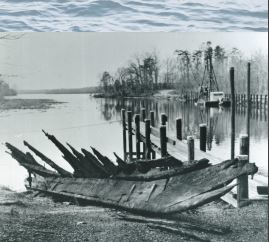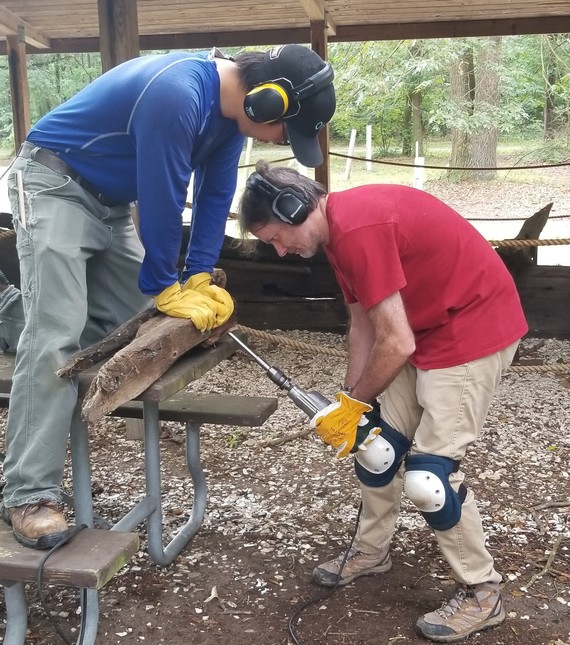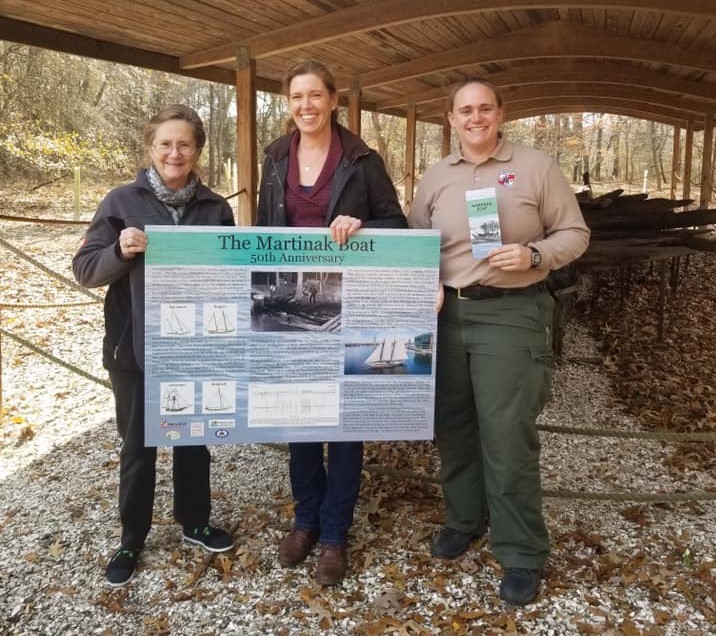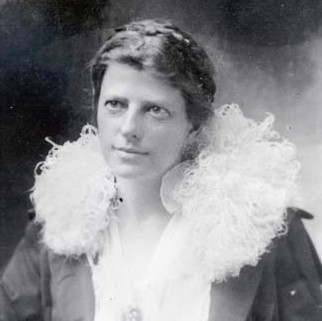COVID-19 Update
In response to the COVID-19 crisis and the Governor's mandate, MHT staff are teleworking and meeting virtually as appropriate. We will continue working to serve all Marylanders and responding to constituent needs as quickly as possible. At this time, the best way to contact staff is by email. Updates to individual program timelines and requirements can be found on program pages throughout our website. We will keep you posted on any changes and encourage everyone to stay safe and healthy!
|
|
 |
We Want to Hear from You!
The Maryland Heritage Areas Program and MHT are seeking information about the economic and human impacts of the current health crisis – the spread of the COVID-19 – on heritage sites and organizations in Maryland. Please share your feedback via our short online survey! Your participation will help us tailor assistance and support.
|
|
 |
In 1964, the stern of a wooden vessel was pulled from the mud of Watt’s Creek, a tributary of the Choptank River on Maryland’s Eastern Shore. Five years later the bow was recovered nearby. The local paper, the County Record, announced it was a century-old pungy, a type of freight-hauling schooner constructed mostly between 1840 and 1880. The name pungy derives from Pungoteague, Virginia where the design evolved, but the boats vanished from the Chesapeake by the early 20th century. The vessel was an important find. For corroboration, the County Attorney sent photographs to Howard Chapelle at the Smithsonian Institution, who is still considered one of the foremost authorities on vessel construction. The vessel was eventually recovered and interpreted as part of the nearby Martinak State Park.
 |
|
In the decades following the discovery, maritime authorities examined and re-examined the vessel, and generally concurred on the vessel’s identification and dates. In 1974, James Richardson, the noted boatbuilder (who also built the first replica of the Dove) and Dr. Ferdinand Shatard, the maritime curator for the Maryland Historical Society, examined the vessel and concurred it was a pungy. In 1978, John Hnedak of MHT completed a Maryland Inventory of Historic Properties form, referring to the vessel as a pungy with a list of numerous concurring authorities. |
In 1985, Richard Dodds, then at the Chesapeake Bay Maritime Museum, studied the remains and provided photographs and measurements describing it as “70’ long, estimated 25’ beam, 50’ keel length, two masts…fine lines at stern, raking transom, planking approximately 1 ½” – a characteristic of English builders” -- all consistent with a pungy. In 1988, Martinak State Park manager Tammy McCorkle sent wood samples for identification, which were determined to be white oak from the western shore of the Chesapeake Bay. In 1990, noted naval architect Thomas Gilmer examined the vessel and declared it a mid-19th century pungy. In 2001, staff from MHT’s Maryland Maritime Archaeology Program assisted volunteers and park rangers to move the vessel remains to a new pavilion and to reassemble and record them. During the move, assistant state underwater archaeologist Bruce Thompson recorded that the remains did not exactly match the characteristics of a pungy. Based on the lines, tool marks and hardware, he felt it might date between 1794 and 1815 and represented a vessel form that would eventually evolve into the pungy.
 |
Taking core samples for dendrochronology
In 2019, Martinak State Park staff contacted Nichole Doub, lead conservator at the Maryland Archaeological Conservation Laboratory, to ask if she would assess the condition of the vessel as they feared it was deteriorating. Nichole and state underwater archaeologist Susan Langley examined the vessel and found it surprisingly solid. Aware of the disagreement about its age and noting the presence of some sapwood, MHT engaged Oxford Tree-Ring Laboratory (OTL) to undertake dendrochronology (extracting cores to count the growth rings in the wood) in an effort to determine a more precise age. The OTL found sapwood suitable for testing on four timbers but also sampled other features, such as the mast step, for a total of nine cores. While the cores were being taken, several park guests stopped to watch and ask questions. Park staff expressed appreciation for the dendrochronological study but also concern that they could not interpret the vessel as well as they would like.
 |
Susan Langley and Nichole Doub present the interpretative panel to Martinak State Park.
The result of the dendrochronological analysis places the construction of the vessel at, or soon after, 1825. This points to one of two possible, but equally significant, scenarios: that it is an earlier vessel form evolved almost to a pungy, or that the vessel is indeed a pungy, demonstrating that pungies were being built earlier than previously believed. Given that 2019 was also the 50th anniversary of the vessel’s full recovery, Nichole and Susan designed an interpretive poster panel and produced 1000 brochures as an anniversary gift, to assist the park in interpreting the site.

In honor of Women's History Month and Governor Hogan's proclamation of 2020 as the Year of the Woman, MHT staff shared stories and images related to women's history in Maryland throughout the month of March. (Alice Ferguson - an artist, businesswoman and amateur archaeologist - is pictured on the right.) Follow us on Facebook to learn more and see upcoming posts!
|
ICYMI: New Funding Opportunity
Maryland has authorized $50 million in grant funding for small businesses and nonprofits with under 50 full- and part-time employees that are experiencing disrupted operations due to COVID-19. The Maryland Small Business COVID-19 Emergency Relief Grant Fund can assist with cash operating expenses including payroll, suppliers, rent, fixed debt payments and other mission critical cash operating costs.
|
|
 |

OUR HISTORY, OUR HERITAGE: BLOG ROUND-UP
|